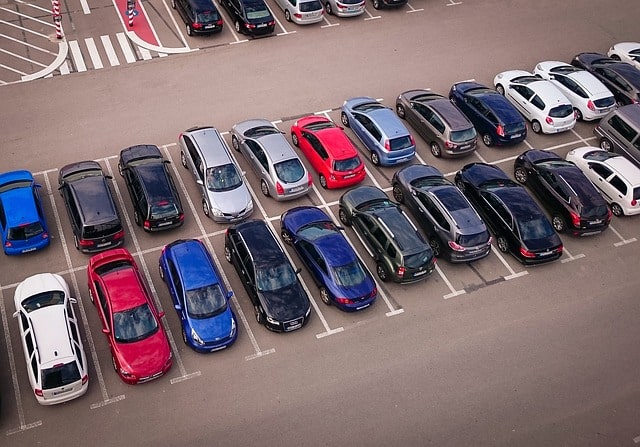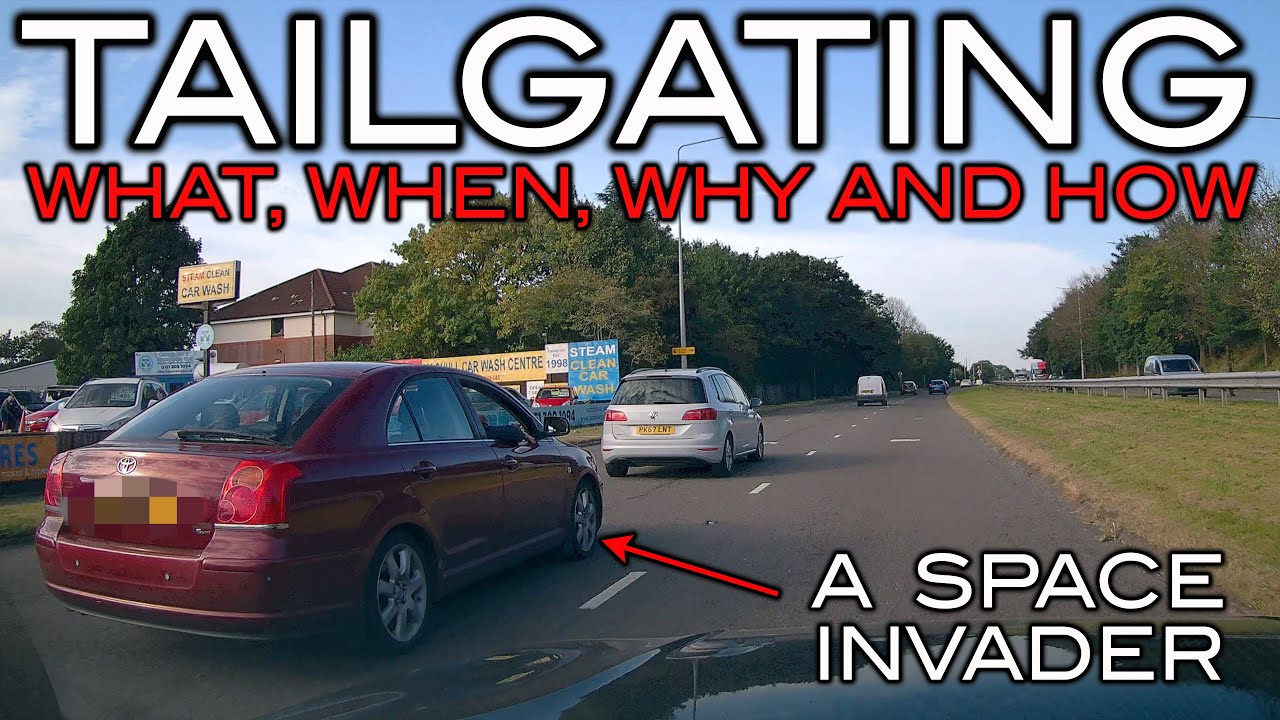
Understanding Car Park Accidents in the UK
When you’re learning to drive with us at Smart Drive UK, we prioritise not just passing your test, but also preparing you for real-world driving scenarios. Car park accidents in the UK are more common than many realise, and as a learner driver, it’s crucial to understand the factors contributing to these incidents.
Prevalence and Contributing Factors
Car parks can be high-risk areas due to their unique driving conditions. Factors such as tight spaces, high vehicle turnover, and pedestrian activity increase the likelihood of accidents. Moreover, the design and maintenance of the car park itself, including lighting and layout, can significantly affect accident rates.
The Human Element in Accidents
Human behaviour is a leading cause of car park accidents. Reckless driving, distraction, and poor judgment are often to blame. At Smart Drive UK, we emphasise the importance of vigilance and responsible driving habits to mitigate these risks.
Why Awareness Matters for Learners
As a learner, being aware of these risks is the first step towards prevention. We integrate this knowledge into our training, ensuring that you’re not just prepared for the driving test, but for the practical challenges you’ll face in everyday driving situations. Understanding the dynamics of car park accidents is an essential part of becoming a safe and competent driver.
The Human Factor: Behaviour and Accident Causation
Understanding the human element in car park accidents is crucial for learner drivers. At Smart Drive UK, we recognise that over half of these incidents are due to human error. Let’s delve into the behaviours that contribute to these mishaps and how we can help you avoid them.
Common Human Errors Leading to Car Park Accidents
Human errors, such as reckless driving and distracted driving, are the primary culprits in car park accidents. Reckless driving in these confined spaces often includes speeding or not adhering to the car park’s traffic flow, while distracted driving can stem from using mobile devices, adjusting in-car entertainment, or other activities that take your attention away from the driving task.
Reckless Driving in Confined Spaces
In car parks, reckless driving can manifest as speeding around corners, not stopping at pedestrian crossings, or ignoring one-way systems. These actions not only endanger the driver but also pedestrians and other vehicles.
The Impact of Distracted Driving
Distracted driving increases the risk of collisions, especially when manoeuvring in tight spaces. A momentary lapse in concentration can lead to misjudging distances or failing to notice other cars and pedestrians.
Smart Drive UK’s Approach to Mitigating Risky Behaviours’
At Smart Drive UK, we would emphasise the importance of awareness and focus. Our instructors teach techniques to enhance concentration, such as scanning the environment effectively and anticipating the actions of others. We also stress the importance of defensive driving practices, which are essential in busy car park environments. By instilling these habits, we aim to prepare you for safe driving, not just in car parks, but wherever your journey takes you.
Navigating Car Park Layouts Safely
When you’re learning to drive, understanding how to navigate car parks safely is as important as mastering the roads. At Smart Drive UK, we’re committed to teaching you the intricacies of different car park layouts and how to handle them with confidence.
Influence of Car Park Design on Safety
Car park safety is significantly influenced by factors such as lighting, maintenance, and layout. Poor lighting can obscure visibility, making it difficult to spot pedestrians and other vehicles. Regular maintenance is crucial to prevent accidents caused by surface defects. The layout, including the arrangement of parking bays and traffic flow patterns, must be navigated with care to avoid collisions.
Best Practices in Challenging Conditions
In poorly lit or maintained car parks, we advise you to:
- Reduce your speed to allow more reaction time.
- Use your headlights to improve visibility, even during the day.
- Pay extra attention to the signage and road markings.
- Be vigilant for any hazards like potholes or debris.
Adapting to Different Layouts
Each car park has its unique design. We teach you to:
- Observe and adapt to the specific rules of each car park.
- Practice manoeuvring in tight spaces to build spatial awareness.
- Anticipate the actions of other drivers and pedestrians, especially in complex layouts.
Our Role in Enhancing Your Spatial Awareness
At Smart Drive UK, we incorporate practical sessions in various car parks to ensure you’re well-versed in different scenarios. Our experienced instructors provide personalized guidance to help you develop the skills necessary for safe and efficient car park navigation.
Types of Collisions and How to Avoid Them
As a learner driver, it’s essential to be aware of the common types of collisions that occur in car parks and how to avoid them. At Smart Drive UK, we prioritize your understanding of these incidents to help you become a safer driver.
Common Collision Scenarios
Car parks can be hotspots for various types of collisions, including:
- Stationary car collisions: where one vehicle hits a parked car.
- Cars pulling out: accidents that occur when a car exits a parking space without noticing oncoming traffic.
- Rear-end collisions: often a result of one car following another too closely.
- Junction crashes: where two vehicles collide at the intersection of car park lanes.
- Reversing collisions: when a car reverses into another vehicle or obstacle.
- Parked car incidents: such as opening a door into the path of another car.
Avoiding Collisions with Stationary Cars
To avoid hitting a parked car, we teach you to:
- Always check your mirrors and blind spots before pulling out.
- Maintain a safe distance from parked cars.
- Be especially cautious in tight car park spaces.
Techniques for Safe Pulling Out and Reversing
When pulling out or reversing, it’s important to:
- Use your mirrors and check all around the vehicle.
- Reverse slowly and be prepared to stop if something enters your path.
- Signal your intentions to other drivers and pedestrians.
Smart Drive UK’s Training on Collision Avoidance
Our training includes practical exercises that simulate car park environments, teaching you how to:
- Navigate safely around parked vehicles.
- Judge distances accurately when manoeuvring.
- React appropriately to the unexpected actions of others.
We ensure that you have the skills and confidence to handle car park situations effectively, reducing the risk of accidents.
Fault Attribution and Legal Implications
Navigating the complexities of fault determination in car park accidents is a critical component of driving education. At Smart Drive UK, we ensure that you’re not only prepared to drive safely but also equipped with the knowledge to understand the legal implications should an accident occur.
Determining Fault in Car Park Collisions
In the UK, fault in car park accidents is often determined by the circumstances of the collision. For instance, if you’re moving and collide with a stationary vehicle, you’re likely to be considered at fault. However, if you’re legally parked and someone hits your car, the other driver would typically be at fault. We teach you the importance of understanding these nuances to help you make informed decisions while driving.
Complexities in Illegal Parking Situations
Illegal parking adds a layer of complexity to fault determination. If an accident occurs because a car is parked where it shouldn’t be, fault may be shared or attributed to the illegally parked vehicle. We stress the importance of always parking in designated areas to avoid such complications.
The Role of Right of Way Knowledge
Understanding the right of way is crucial in avoiding accidents and in fault determination. We cover the essential rules of right of way in our lessons, so you’re clear on when to yield and when you have the priority, reducing the likelihood of disputes.
Legal Insights from Smart Drive UK
Our curriculum includes essential legal knowledge that informs you of your rights and responsibilities on the road. By understanding the legal aspects of driving, including fault attribution in accidents, you’re better prepared to handle any situation with confidence and legality.
Evidence Collection Post-Accident
In the unfortunate event of a car park accident, collecting the right evidence is pivotal.
Immediate Evidence to Gather
After ensuring everyone’s safety and if it’s safe to do so, you should collect the following evidence:
- Photographs and videos of the vehicles involved, their positions, and any damage incurred.
- Diagrams of the accident scene, including vehicle positions and directions of travel.
- Witness statements, if any bystanders are willing to provide their account.
- Notes on environmental conditions, such as lighting or weather, that may have contributed to the accident.
Preparing to Collect Evidence
We encourage you to always carry a charged smartphone or a camera, a notepad, and a pen in your vehicle. This ensures you’re ready to document any necessary details at the scene.
The Importance of Evidence for Claims
Accurate evidence is crucial for insurance claims and legal processes. It helps to establish the facts and can significantly influence the outcome of any disputes regarding fault.
Educating Learners on Post-Accident Protocols
Our comprehensive training can include guidance on:
- The types of evidence to collect and how to document them effectively.
- The importance of remaining calm and not admitting fault at the scene.
- How to interact with other parties involved and exchange necessary information.
By equipping you with this knowledge, we aim to ensure that you’re prepared for any eventuality on the road.
Proactive Accident Prevention Strategies
At Smart Drive UK, we believe that prevention is better than cure, especially when it comes to driving. We equip our learners with proactive strategies to minimize the risk of car park accidents.
Developing Safe Driving Habits
To prevent accidents, we encourage you to develop habits such as:
- Regularly checking your vehicle’s mirrors and blind spots.
- Adhering to car park speed limits and traffic flow directions.
- Being vigilant for pedestrians and other vehicles, especially in tight spaces.
The Role of Vehicle Maintenance in Safety
Keeping your vehicle in top condition is essential for safe driving. We stress the importance of:
- Regular maintenance checks, including brakes, tires, and lights.
- Promptly addressing any mechanical issues to avoid unexpected breakdowns or malfunctions.
The Importance of Seatbelt Usage and Hand Positioning
Safety features like seatbelts can save lives, and proper hand positioning gives you better control of your vehicle. We ensure you understand:
- Why seatbelts are a critical safety feature, not just a legal requirement.
- How correct hand positioning on the steering wheel enhances manoeuvrability and reaction time.
Emphasising Proactive Safety with Smart Drive UK
Our comprehensive lessons cover:
- Defensive driving techniques to anticipate and react to potential hazards.
- The use of indicators and mirrors to communicate with other drivers.
- The significance of proper seating and mirror adjustments for optimal visibility and control.
By instilling these proactive safety measures, we aim to prepare you for a lifetime of safe driving.
Advanced Driving Techniques for Accident Avoidance
At Smart Drive UK, we encourage driving techniques into our curriculum to enhance your ability to avoid accidents, particularly in car parks where hazards are prevalent. These techniques are designed to heighten awareness and improve reaction times.
Mastering the Three-Second Rule
The three-second rule is a method to ensure a safe following distance. To apply this rule:
- Observe when the car ahead of you passes a fixed point.
- Count three seconds. If you reach the same point before you finish counting, you’re too close.
This technique gives you ample time to react to sudden stops and is especially useful in car parks where cars frequently brake unexpectedly.
Utilizing 12-Second Foresight
12-second foresight encourages you to scan the area you’ll be driving into within the next 12 seconds. This isn’t just about the space directly in front of your vehicle; it’s about anticipating potential hazards before they become immediate threats. By doing so, you can adjust your driving proactively, reducing the risk of collisions.
Emphasising Defensive Parking and Technology
Defensive parking involves choosing spaces where you’re less likely to be hit by other drivers, such as at the end of rows or away from tight corners. We also advocate for the use of technology, like parking sensors and rear-view cameras, which can significantly aid in preventing accidents.
Integrating Techniques into Our Training
Our training sessions include practical exercises that allow you to apply these advanced techniques in real-life scenarios. We ensure that you’re not just learning these skills in theory but are also putting them into practice, making you a safer, more confident driver.
Immediate Actions Following a Car Park Accident
If you find yourself in a car park collision, the steps you take immediately afterward are critical for your safety and for any potential insurance claims.
Ensuring Safety First
Your first priority should be safety. If possible, move vehicles to a safe area to avoid obstructing traffic. Then, check if anyone is injured and call emergency services if necessary. It’s important to stay calm and focused during this time.
Collecting Essential Information
Gather the names, contact details, and insurance information of all parties involved. If there are witnesses, politely ask for their accounts and contact details as well. Remember to take photos of the scene, including all vehicles and any relevant road signs or markings.
Avoiding Fault Admission
Even if you believe you might be at fault, it’s crucial not to admit liability at the scene. Fault is a complex legal matter that will be determined later, and premature admissions can complicate the process.
Interacting with Insurance Companies
In the event of an accident, it’s important to contact your insurance company as soon as possible. Provide them with all the collected evidence without admitting fault. Be factual about the incident, and if you have dashcam footage, make sure to mention it, as it can be invaluable in supporting your claim.
Handling Non-Fault Claims
For non-fault claims, the process involves:
- Notifying your insurer about the accident details.
- Providing evidence that supports your claim of non-fault.
- Working with an accident management company if necessary.
These steps help ensure that the other party’s insurance covers the costs without affecting your no claims bonus.
Ensuring Financial Protection
To avoid financial disadvantage:
- Keep a record of all communications with your insurance.
- Understand the terms of your insurance policy.
- Consider legal protection cover, which can help recover uninsured losses.
The Role of Defensive Driving in Car Park Safety
Defensive driving is a proactive approach to navigating the roads, and it’s equally crucial in the confined spaces of car parks. At Smart Drive UK, we tailor our defensive driving lessons to include scenarios you’ll encounter in car parks, ensuring you’re prepared for the unexpected.



